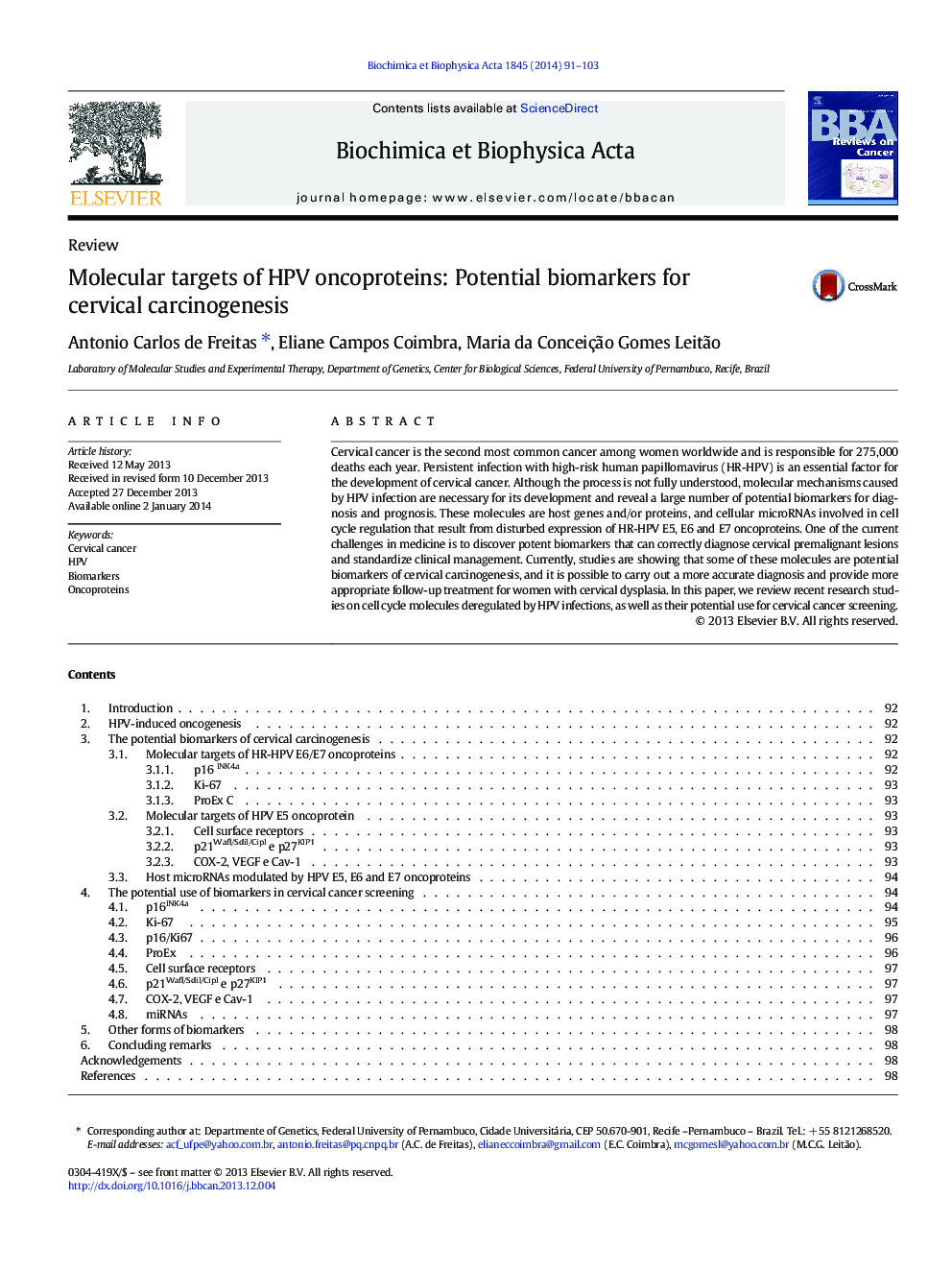| Article ID | Journal | Published Year | Pages | File Type |
|---|---|---|---|---|
| 10895563 | Biochimica et Biophysica Acta (BBA) - Reviews on Cancer | 2014 | 13 Pages |
Abstract
Cervical cancer is the second most common cancer among women worldwide and is responsible for 275,000 deaths each year. Persistent infection with high-risk human papillomavirus (HR-HPV) is an essential factor for the development of cervical cancer. Although the process is not fully understood, molecular mechanisms caused by HPV infection are necessary for its development and reveal a large number of potential biomarkers for diagnosis and prognosis. These molecules are host genes and/or proteins, and cellular microRNAs involved in cell cycle regulation that result from disturbed expression of HR-HPV E5, E6 and E7 oncoproteins. One of the current challenges in medicine is to discover potent biomarkers that can correctly diagnose cervical premalignant lesions and standardize clinical management. Currently, studies are showing that some of these molecules are potential biomarkers of cervical carcinogenesis, and it is possible to carry out a more accurate diagnosis and provide more appropriate follow-up treatment for women with cervical dysplasia. In this paper, we review recent research studies on cell cycle molecules deregulated by HPV infections, as well as their potential use for cervical cancer screening.
Related Topics
Life Sciences
Biochemistry, Genetics and Molecular Biology
Cancer Research
Authors
Antonio Carlos de Freitas, Eliane Campos Coimbra, Maria da Conceição Gomes Leitão,
